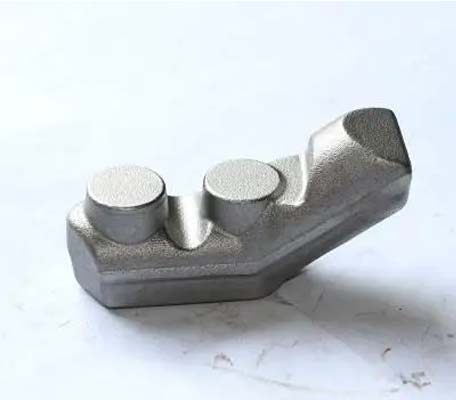- Contact Innally, Let you purchase forgings in China more favorable prices, products more assured!
- Hotline:+(86)15038323776 Email:innally@innally.com
What are the differences between bicycle forgings and motorcycle forgings in the production process?
- Category: Steel forgings, Thermal forging
- |
- Date: 21/09/2023
there are some differences between bicycle forgings and motorcycle forgings in the production process. These differences are mainly reflected in the production scale, forging equipment and process, material selection and product standards. These differences are determined by the different nature and fields of application of bicycles and motorcycles.
Product Details
There are some differences between bicycle forgings and motorcycle forgings in the production process. These differences mainly involve production scale, forging equipment and process, material selection and product standards.
First of all, from the production scale, the production of bicycle forgings and motorcycle forgings is usually different. The production of bicycle forgings is usually large, because the bicycle is a relatively popular means of transportation, and the market demand is large. In contrast, the production of motorcycle forgings may be small, because motorcycles are a more personalized means of transportation, and the market demand is relatively small.

Secondly, forging equipment and processes are also different. Bicycle forgings usually use smaller forging equipment, such as forging hammers, presses, etc., while motorcycle forgings require the use of larger forging equipment, such as air hammers, hydraulic presses, etc. In addition, bicycle forgings usually use relatively simple forging processes, such as free forging, die forging, etc., while motorcycle forgings need to use more complex forging processes, such as precision forging, heat treatment, etc.
Again, the choice of materials is different. Bicycle forgings usually use low carbon steel, alloy steel and other materials, while motorcycle forgings need to use higher grade materials such as high-strength steel and stainless steel. In addition, bicycle forgings usually require surface treatment, such as painting, electroplating, etc., while motorcycle forgings may require more complex anti-corrosion treatment, wear-resistant treatment, etc.
Finally, product standards are different. Bicycle forgings usually need to meet simpler quality standards, such as tensile strength, yield strength, etc., while motorcycle forgings need to meet more complex quality standards, such as impact strength, wear resistance, etc. In addition, bicycle forgings and motorcycle forgings also need to comply with the relevant safety standards and other standards in their respective fields.
To sum up, there are some differences between bicycle forgings and motorcycle forgings in the production process. These differences are mainly reflected in the production scale, forging equipment and process, material selection and product standards. These differences are determined by the different nature and fields of application of bicycles and motorcycles.
nannan
INNALLY mainly provides you with various types of cast and forged parts products. Welcome your inquiries! innally@innally.com
Related Products
Search
Forging center
- Steel forgings
- Aluminium alloy forging
- Titanium alloy forging
- Stainless steel forging
- Copper forging
- Automotive forgings
- Locomotive forging
- Bicycle forgings
- Motorcycle forging
- Rigging and fasteners
- Bearing forging
- Electric power fittings
- Marine forging
- Mechanical forgings for metalworking
- Mining machinery forgings
- Marine engineering forgings
- Construction machinery forgings
Popular product

© 2025. All Rights Reserved.






